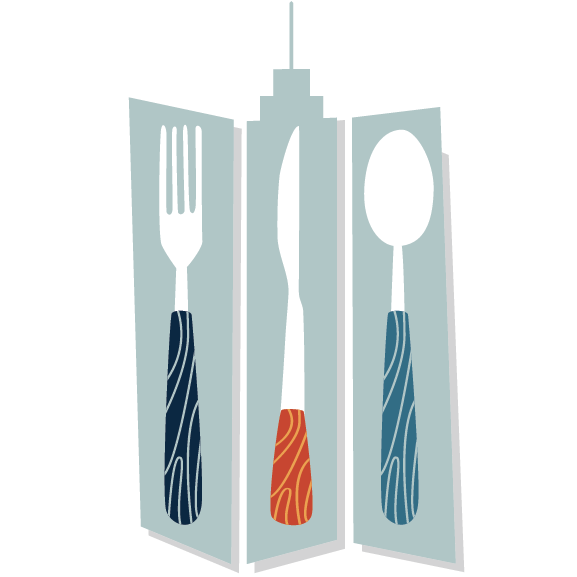How About Those Iconic Roasted Chestnuts?
‘Tis the season for chestnuts, y’all!
Just last week the GrowNYC at Union Square posted that farmers were bringing in their chestnuts. Hot Dog! (or, Hot Nut!) It has become one of my biggest joys to follow the seasons at the farmer’s market—now is the time for chestnuts, apples, quinces, persimmons, pumpkins and fall tomatoes. Delightful! It’s really something to observe the cycle for seasonal healthy foods harvested by these amazing farmers. And this week I present two autumnal chestnut recipes for you to enjoy—crème de marrons (chestnut cream) served with crêpes and a simple roasted chestnut flambé.
I never ate a chestnut growing up in the South. I heard Nat King Cole sing of them, and always wondered what that cozy-sounding nut tasted like. When I first moved to New York, there were vendors on the streets selling roasted chestnuts in the fall and winter and I thought “Ooooo! Look at this! Chestnuts roasting on an open fire,” as the song goes.
chestnut street vendor in NYC
But in the past 10 years, the NYC chestnut vendors have faded, with only a few selling them during the holidays, mainly for tourists. It also seems that a lot of folks here in the States don’t really have a taste for chestnuts. There may be a reason for that, which makes me a little sad, particularly because I think this sweet nut meat tastes marvelous!
Until recently, I wasn’t aware of the history of the American Chestnut tree. Many of you probably know the ecological value of the mighty tree, how it succumbed to the blight, and how it devastated most of Appalachia. But if you want to hear its fascinating history, go here to learn more of how we lost the prolific American Chestnut tree population at the beginning of the 20th century.
Native Americans feasted on the American chestnut long before European and Asian varieties were introduced to this country, and alas, it was the Asian variety planted in New York in 1904 that brought the blight to the eastern part of our country. They say that the American chestnut is smaller and sweeter than its brethren from Italy & China, and if that’s true, I hope I get to taste one one day, given the impressive efforts of scientists at the American Chestnut Foundation. The foundation works to educate us, breed a hybrid that can withstand the blight, and nurse saplings that grow from old roots—all in support of healthy forests, wildlife, and our global ecosystem.
But for now, what we find here are nuts primarily from Chinese and Italian chestnut tree varietals. Tim Stark, founder of Eckerton Hill Farm, tells me “there are chestnut trees all over the place here in Pennsylvania. No two trees produce the same chestnuts [and] they are so sweet you can eat them raw, although roasting is still a good idea.” Tim isn’t wrong! The sweet meat from his chestnuts are divine and even though I present a couple of simple recipes this week, eating them roasted from the oven is a wonderful treat and harkens me back to when I first moved to New York.
chestnut grove in Tuscany
The chestnut provides us with a global connection, too. It’s a valuable crop in Europe, China, and Japan and the starchy nut is often substituted for potatoes in European, Asian, and African fare. The chestnut flexes from savory to sweet, and it’s a substantial nutritious snack. This mighty nut packs in nutrients like vitamin C, magnesium, & potassium and its combination of fiber & starch make it filling. In fact, the chestnut was considered “free food” as one can go into a forest and gather chestnuts from the ground. I often dream of doing just that at a grove in Tuscany in the autumn one day! (Someone will have to teach me how to gather without sticking my hands with the burs surrounding the brown nuts!) You can certainly find pre-roasted and freshly packed chestnuts at the store, but I encourage you to try roasting your own. It is far tastier (especially when “naked”) than its store-bought counterpart.
Both the French and Italians make a sweetened chestnut paste that can be spread on anything from toast, to crepes, to fruit, and it can top your daily yogurt or ice cream treat. The French call the paste crème de marrons and taking a cue from Rachel Khoo, I add heavy cream to the marrons and spread the nutty creamy infusion on crêpes de froment (white flour crêpes for sweet fillings). But if you want the traditional non-dairy chestnut paste, don’t add the cream! Instead add simple syrup, perhaps some Cognac or Armagnac, and puree that mixture for the creamy chestnut paste.
If you want to add a simple sweet touch to the chestnut, flambé the roasted nuts with an aged rum, Cognac or Armagnac and a couple of tablespoons of sugar. Cook that down to a yummy syrup that beautifully coats the whole roasted sweetmeat. Pair the flambéed chestnuts glazed with the sweet sauce with the same spirit you used to flambé or with a nice glass of red wine or port and taste the warmth of autumn.
Both of these are light desserts that also taste rich and luxurious, largely due to the starch content of the chestnut. When you puree the chestnut cream, in particular, you’ll see how velvety the texture becomes. And both of these recipes really feature the flavor of the chestnut, which I find can get lost with some chestnut stuffing, soup, or baked goods recipes.
I hope you enjoy gathering a bag of chestnuts from your local farmer or elsewhere and taste this sweet sweet meat! Taking a bite takes us across a long history and world culture, and inevitably, it connects all of us.
I cannot think of a better metaphor for the connection we need these days. Here’s to that ol’ chestnut!



